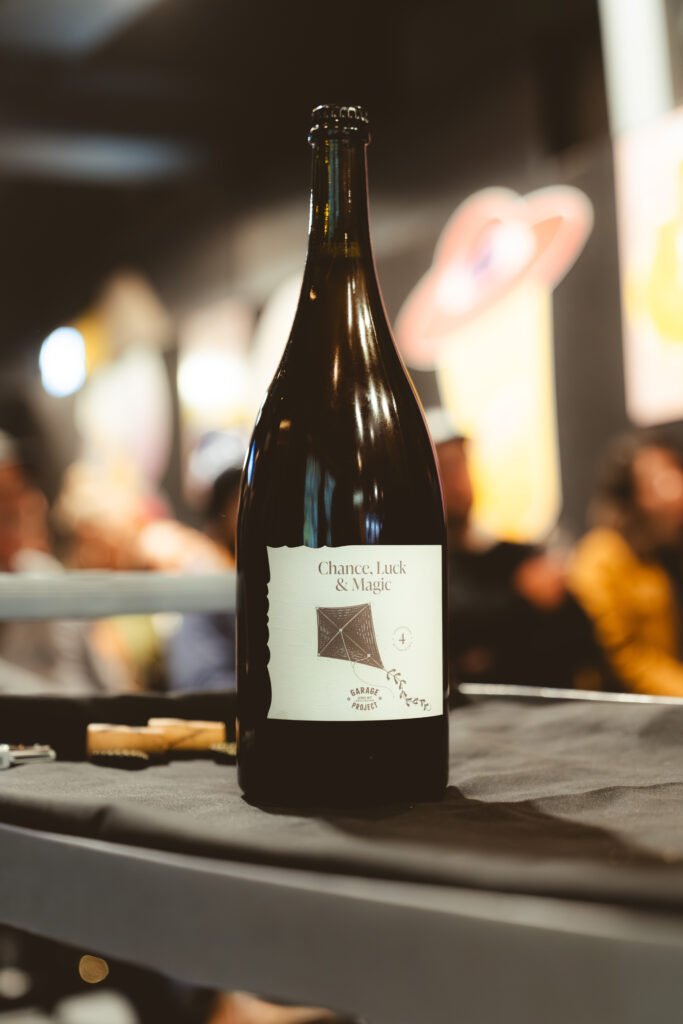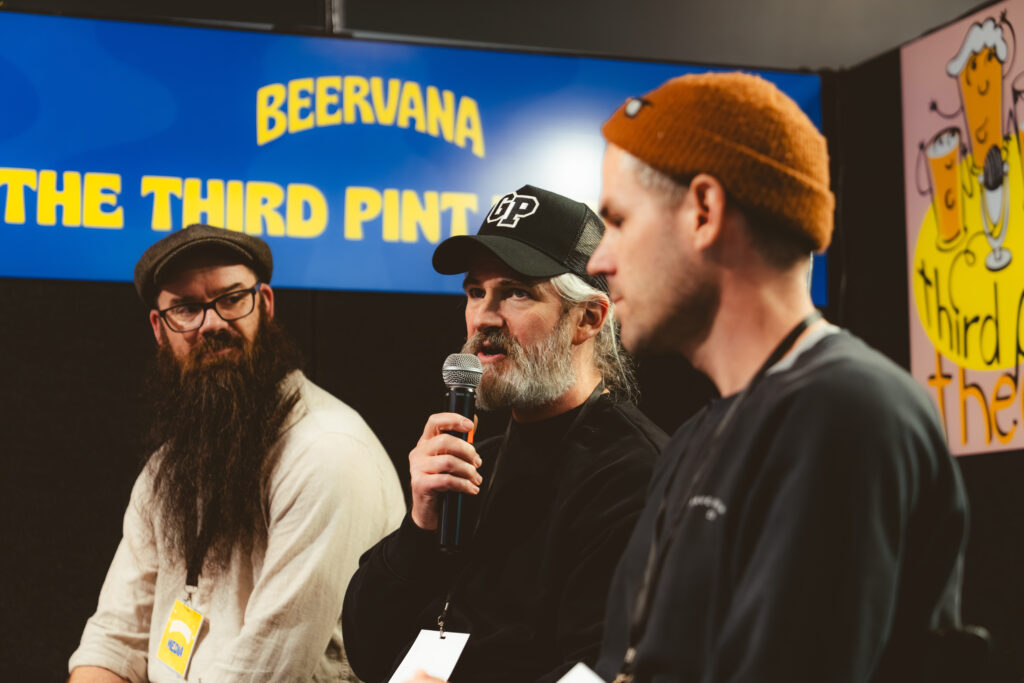At Beervana, The Third Pint Theory was joined by Garage Project founder Pete Gillespie and Wild Workshop brewer Dave Bell for a Q&A session on Chance Luck & Magic 2021, the Champion NZ Beer.
At the session we sampled the hard-to-get 2021 vintage as well as the 20202 and 2023. The beers are brewed using a cool ship at Wild Workshop, in Marion Street.
Here’s an edited extract from that talk.
Q: Who came up with the idea to do or have a cool ship in the middle of Wellington and then to make a beer like this? What was the inspiration?
Pete: The inspiration for Wild Workshop came from a trip that Jos [Ruffell] and I did over to Brussels to visit Cantillon.
I’d only read about Cantillon … one of the great Lambic breweries of the world. And these few Lambic breweries managed to keep this style of beer alive when it almost snuffed out. We were so lucky, Jean, who’s the brewer there, is the most generous guy. He spent literally half a day with us talking about everything, showing us around. And it was just a magical experience. When we got back to Wellington, about a year later, Jos said, ‘you’ve got to come and see this’.
And the thing that he took me to was this shitty little upstairs attic at Marion Street, which, you know, it doesn’t look like much.
Whenever I’m doing a tour, I start people there, because it was that attic that reminded me exactly of the attic space at Cantillon where they had their cool ship. So, we planned to have the cool ship up in the attic. In fact, it turned out that the cool ship was way too heavy and there was no way we were ever going to get it up there.
So the cool ship now lives on the second story. If you don’t know what a cool ship is, it’s a very traditional way of cooling beer down. So we make the hot wort at Aro Street, bring it to Marion Street, pump it upstairs into this big, shallow, stainless steel pan.

It fits like 3000 litres. And then we throw the windows open at Marion Street and invite in the wild yeast and bacteria from outside. So, you know, that’s we had that in mind when we started Marion Street, but it’s Dave, it’s the magic of Dave that’s really made this beer so fantastic.
Q: Dave, what is the magic? But before that, we should go back to something unmagical. After you attended the NZ Beer Awards, you returned to Wellington and perfect conditions to put down a vintage. And that requires sleeping with the wort. How was that after a celebratory weekend?
Dave: Yeah, we obviously had a big weekend in Christchurch so celebrated our trophies after the awards, flew back up to Wellington on Sunday, and then Monday was a 14-hour brew day, five-and-a-half-hour mash, three-hour boil. And then, yeah, I sleep next to the cool ship.
We actually did that twice in that first week after the awards, so it was a big week. We have a big day making the beer and then the next day racking the barrel, go home and then set it all again.
Q: So why do you have to sleep with it?
Dave: It seems a little silly. We have to turn off all the smoke alarms as the steam sets off our smoke alarms in the brewery, and so with no smoke alarms, they want someone on site.
Pete: Just in case there’s a fire, to make sure there’s somebody there. Otherwise, no one will be hurt!

Q: So how long does it take to inoculate the beer?
Dave: We’ll leave it in the cool ship for 14, 16 hours, rack and barrel the next day, and we normally have a ferment happening within one to two weeks.
Q: The blending. How do you do that?
Pete: So this is a gueuze-style beer, so we blend multiple years. The tradition is year one, two, and three blended, but we’re up to using year five now, just because we have it. So as the beers age, they become more and more complex. The actual brewing part and the cool ship is only a little part of the whole process. What’s important is the blending. So Dave and I will go through all the barrels.
Initially, when I did this, I just assumed that you would go around and find the best barrels and put the best barrels together, and you would have the best beer. But in fact, what works well is obviously finding really good barrels, but we want some quirky ones in there too. I always say it’s a little bit like people. Sometimes you meet a perfect person and they’re fucking boring, right? So having those little quirks is important. We’re looking for character barrels. And we’re often looking for soft barrels so we can manipulate the acidity up and down. It’s a real art form and we’re doing all right so far.
Q: And what have you learned about making it over the years? Have you changed your techniques?
Dave: I learned to make Pilsner in Germany, so everything we do at the Wild Workshop is completely not what I learned to do. I guess just the blending is where we’ve learned the most.
Pete: The only other thing is that we do a turbid mash, and it does take five hours, which is ludicrous. It’s so labour intensive. And one year, Dave and I were like, we don’t need to do that. We’ll be clever. We’re clever brewers. We could just manipulate temperature and we’ll get just the same complex sugars. So we tried that … didn’t work.
Q: The 2021 seems to be coming in to itself in terms of winning awards, like 2020 won a whole lot of awards, and now it’s 2021. And is that a product of its age in the bottle?
Pete: I think a mixture of being in the bottle a lot longer, but also just we’ve got so many barrels now, which adds complexity, we have almost 80 puncheons to choose from. So I think the ‘24, the one we’re going to release in a month or so is the best one we’ve done yet.
But it is worth just noting that hoppy beer obviously should be drunk fresh, like we all know that. This kind of beer, you literally could send it to Mars and it would turn up tasting amazing. So, you know, the age in this case helps.